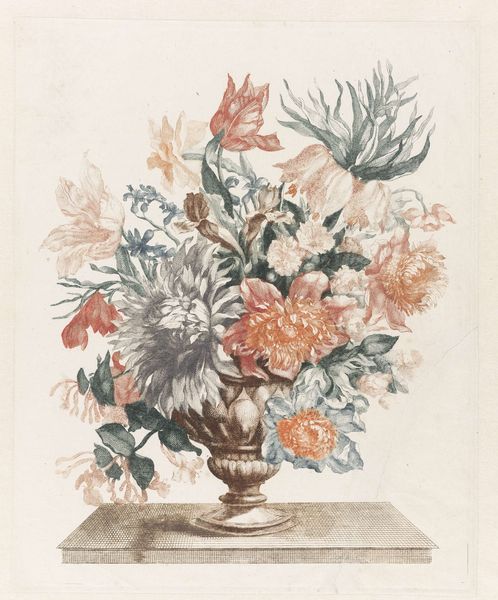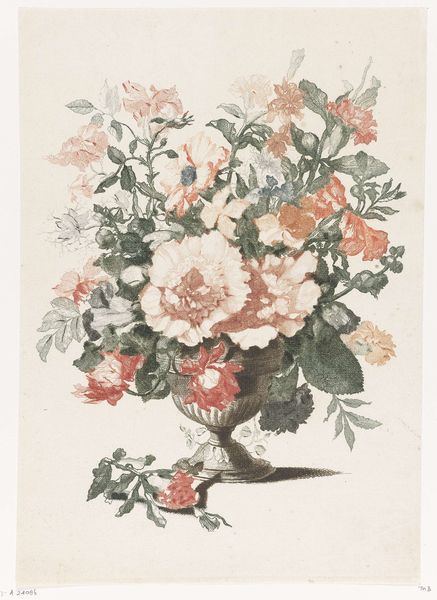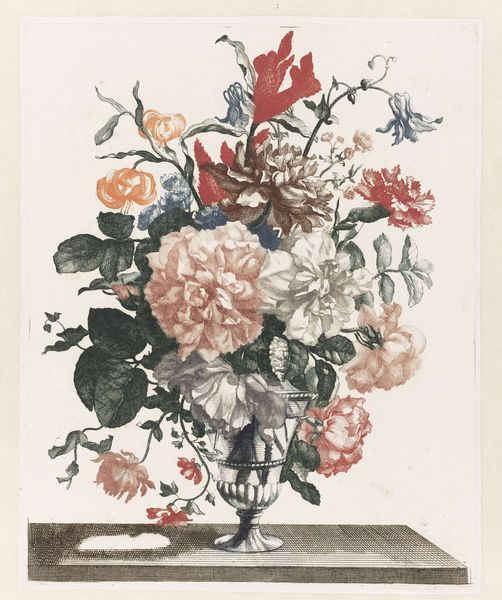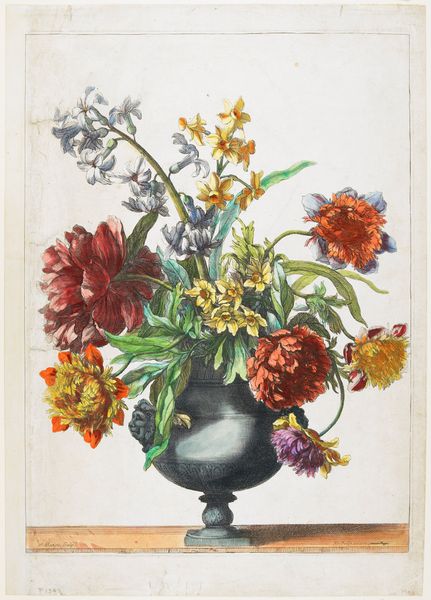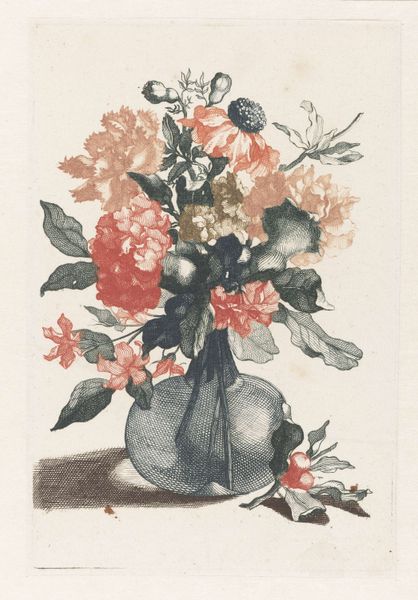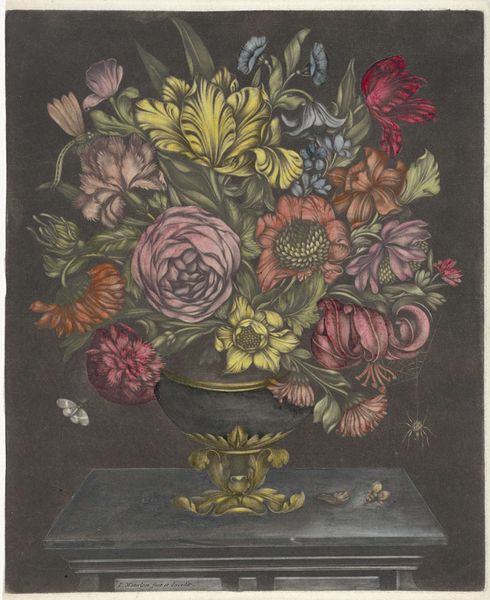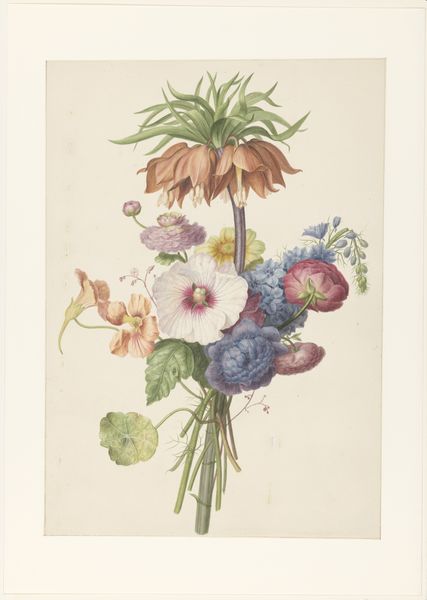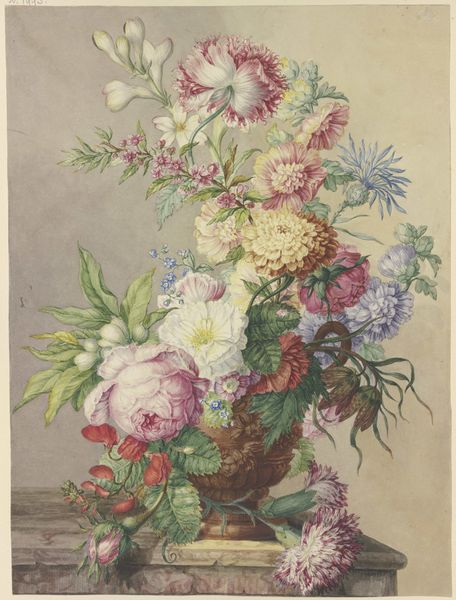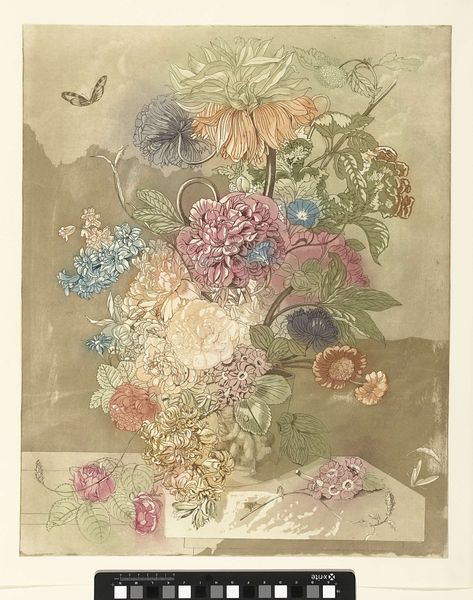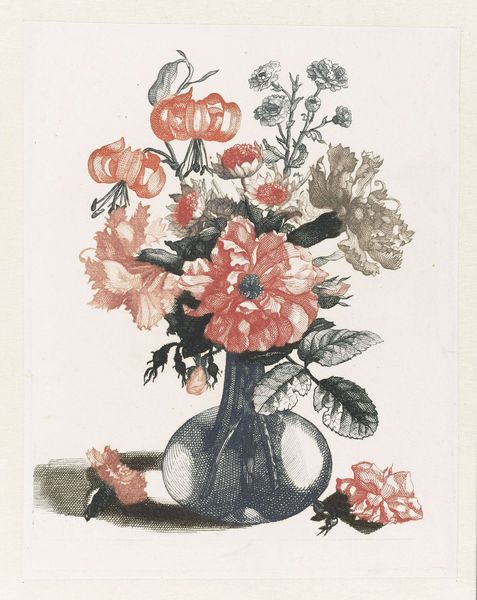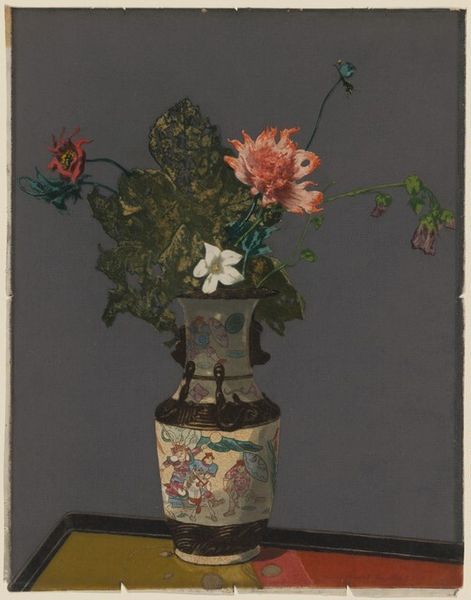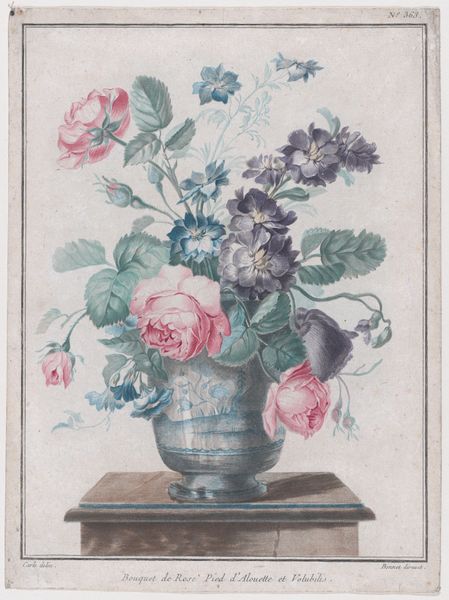
print, earthenware
#
baroque
# print
#
earthenware
#
earthenware
Dimensions: height 307 mm, width 244 mm
Copyright: Rijks Museum: Open Domain
Editor: Here we have a piece called "Stenen vaas met onder andere zonnebloemen en anjers," or "Stone Vase with Sunflowers and Carnations," made between 1688 and 1698. It appears to be a print of earthenware. It feels so lush, almost overflowing with blooms, but also rather somber in its coloring. What do you see in this piece, Professor? Curator: It strikes me as a powerful, though subtle, statement on Dutch identity and global trade. Remember that in the late 17th century, the Netherlands was a major player in global commerce. The flowers, seemingly a simple decorative arrangement, reflect the reach of Dutch traders, who brought exotic species back from the colonies. Editor: That’s fascinating! I wouldn't have considered that. So, the flowers aren't just flowers; they are symbols? Curator: Exactly! Consider the sunflower: while seemingly native, its cultivation was spreading through Europe due to global exchange. Its inclusion suggests a subtle commentary on the human intervention shaping the natural world and how it all ties into global power dynamics and trade networks. Also, this was a period of emerging proto-scientific thinking; there was an intense desire to classify nature. What does displaying them mean in this way? Is the artist playing into this tendency, resisting it, or something else? Editor: So it is like a celebration of global power and also a representation of scientific discovery? Is the sombre colouring suggesting a kind of warning or criticism related to this? Curator: Precisely. Or, perhaps, reflecting a melancholic awareness of the fleeting nature of beauty and life. A constant theme in Dutch Golden Age art! It's all very nuanced. Thank you for making me look at this with fresh eyes! Editor: Thanks so much for your insights! I learned so much today.
Comments
No comments
Be the first to comment and join the conversation on the ultimate creative platform.
